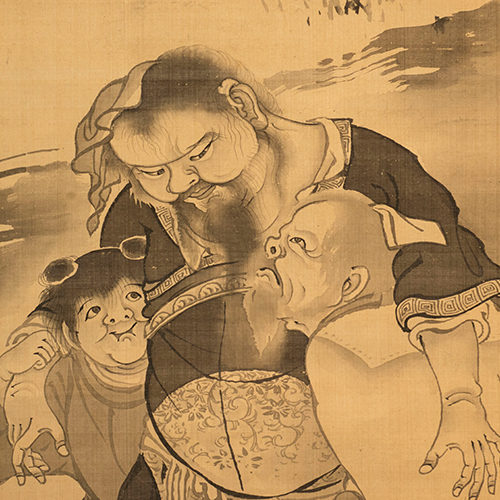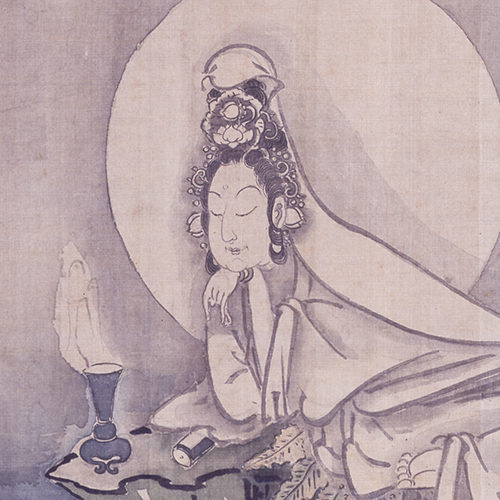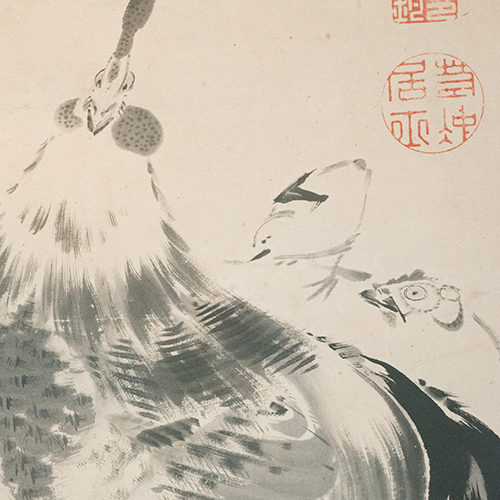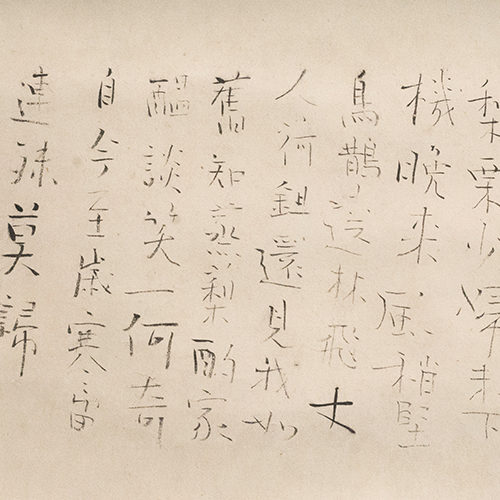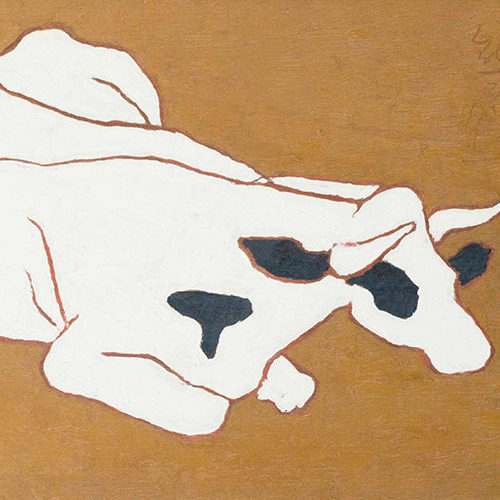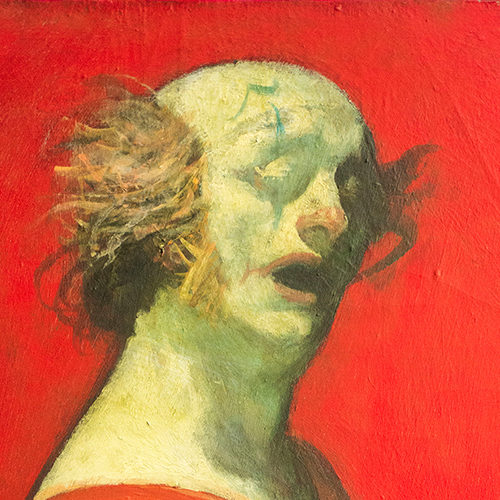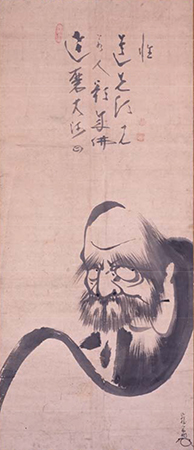
Hakuin Ekaku (1685-1768) was a Zen monk of the Edo period who devoted himself to proselytizing to the people and left numerous calligraphies and paintings. He is considered the founder of the Rinzai sect of Zen Buddhism, and is so important a figure in Japanese Zen Buddhism that all current Rinzai monks are said to be Hakuin’s disciples.
Click here to see Hakuin’s works for sale☜
Childhood
Hakuin was born to a wholesale merchant in Harajuku, Suruga Province (present-day Shizuoka Prefecture). As a child, Hakuin was taken by his mother to Shogenji Temple, where he heard Priest Nichigon speak of the horrors of hell. Perhaps because of the frightening manner in which he spoke, this experience left a strong impression on Hakuin. The young Hakuin was terrified, and spent many days crying himself to sleep whenever he remembered the horror of hell. Hakuin later wrote the following in recollection of those days.
I was so young that I had no friends to talk with and comfort each other. After that, he went to a place where there was no sign of anyone, and wept aloud and sank down. (The Tale of the SakushinOsana)
However, this experience marked a turning point for Hakuin. At that time, Hakuin saw a jo-ruri play called “Nisshin Jo-ninn Nabe Kaburi,” in which Nisshin Jo-ninn was calm and unperturbed even though he was wearing a red-hot cauldron on his head.
Hakuin then went on to train at various temples, and when he was 19 years old, he learned of the death of the famous Tang Dynasty monk Gantou, who was killed by bandits at the Zen Pavilion Temple. Hakuin said the following.
Gantou is one of the most famous monks in 500 years. If even this man cannot escape being killed by bandits, who can cross the Sanzu River after death? (Itsumadegusa)
Discouraged by his Buddhist training, Hakuin decided to make a breakthrough in poetry and calligraphy. He studied the works of To Ho, Li haku, and others as models, but his anxiety about whether he could escape the suffering of hell even if he studied poetry began to rear its head again. At that time, Hakuin saw the owner of a house cherishing a calligraphic work of Taigu Zenji, and he thought that the reason why this hanging scroll was cherished so much was because Taigu Zenji was highly virtuous, and he decided to devote himself to Buddhism once again.
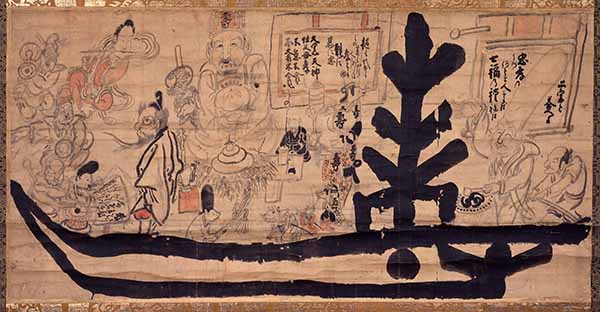
Hakuin continued his training, and after fasting for seven days, he heard the sound of a bell in the distance and realized what was happening.
Old man Gantou was still alive!
Click here to see Hakuin’s works for sale☜
Hakuin’s Zen paintings and Ko-an
What does it mean that monk Gantou, who was supposedly attacked and killed by bandits, is safe? There are many such mysterious questions in the world of Zen, and they are called Zen questions and Ko-an. Many of Hakuin’s Zen paintings depict Ko-an in order to promote Zen among the people.
For example, the following picture is Hakuin’s rendering of a Ko-an called “Goka sorei” from the collection of Ko-an called Mumonkan. Goka latticework is a Ko-an that states, “When a cow passes through a window, its head, horns, and legs can pass through, but only its tail cannot. Why could the small tail not pass through while the large body could?
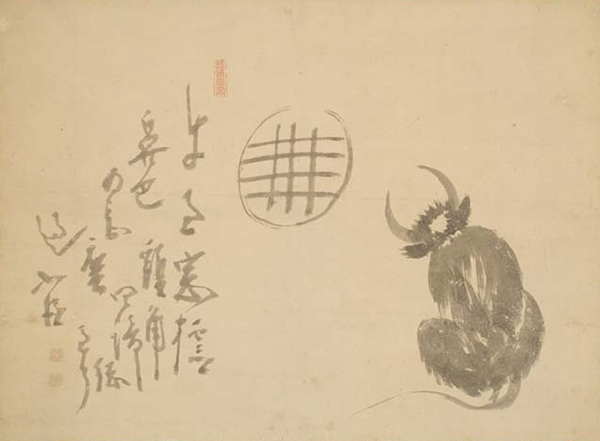
In addition, there is a Ko-an created by Hakuin himself, called “One-Handed Voice. Hakuin asks, “If you strike with both hands, you will hear a sound, but what kind of sound does one hand make? What is the sound of one hand? Why was the monk Gantou safe? Hakuin may be asking these questions to people today through his paintings.
Click here to see Hakuin’s works for sale☜
Zen monk with a bodhi heart
Hakuin was thus a man eager to convey the spirit of Zen to the people. Painting and calligraphy were his means of doing so. Throughout his life, Hakuin cherished his bodhicitta, or the desire to seek enlightenment and save the world. The power and tenderness in Hakuin’s paintings may reflect this sentiment.
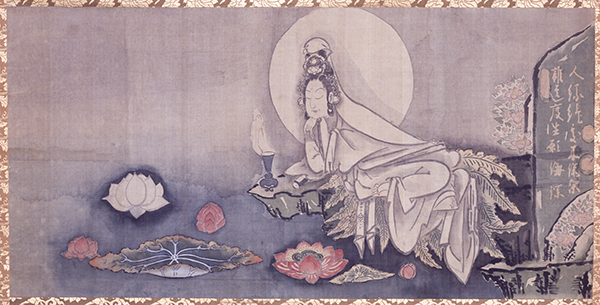
Click here to see Hakuin’s works for sale☜
References
- Katsuhiro Yoshizawa, Itsumadegusa: Osana Monogatari (Wallflower: A Tale of Childhood), Ko-bunsha, 1999.
- Katsuhiro Yoshizawa, Hakuin: The World of Zen Painting, Chu-ko Shinsho, 2005.
![Kyoto [Gallery-So] for purchase, sale, and appraisal of art works](http://gallery-so.net/wp-content/uploads/2020/05/so-logo.png)
